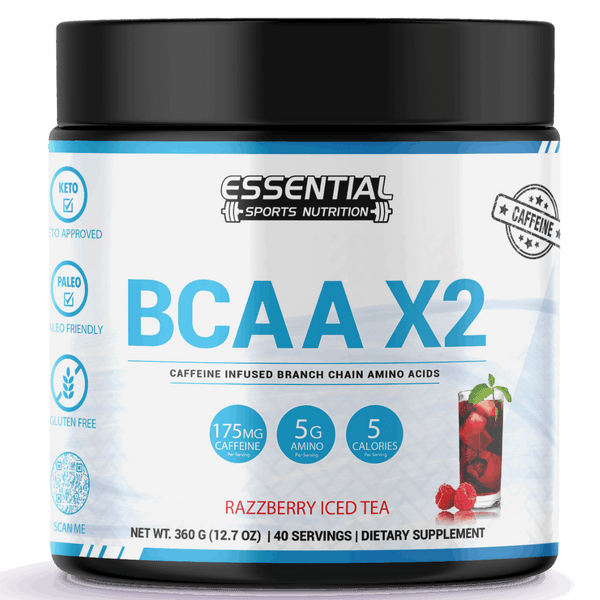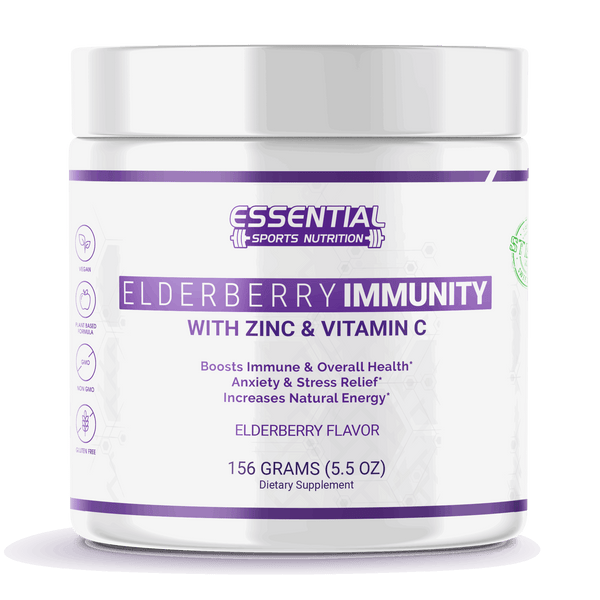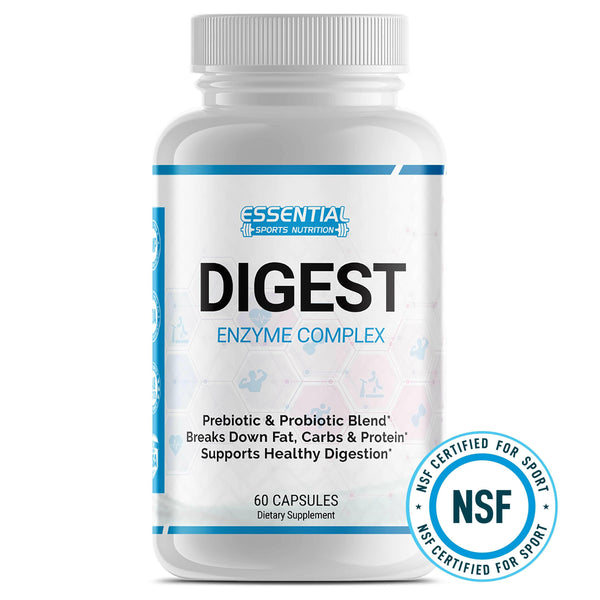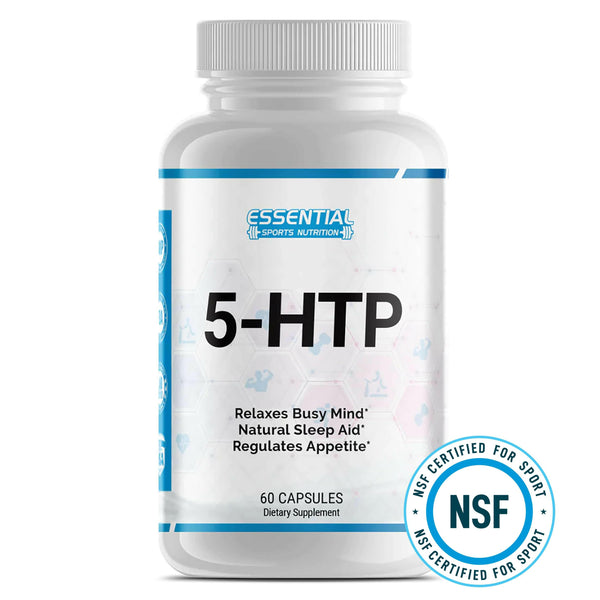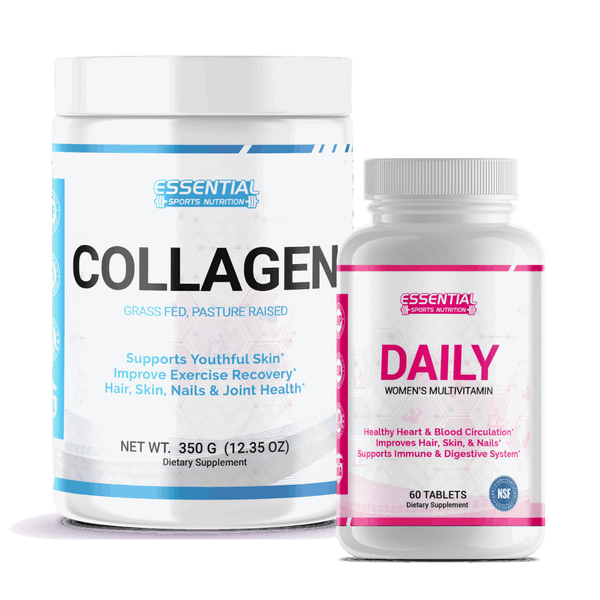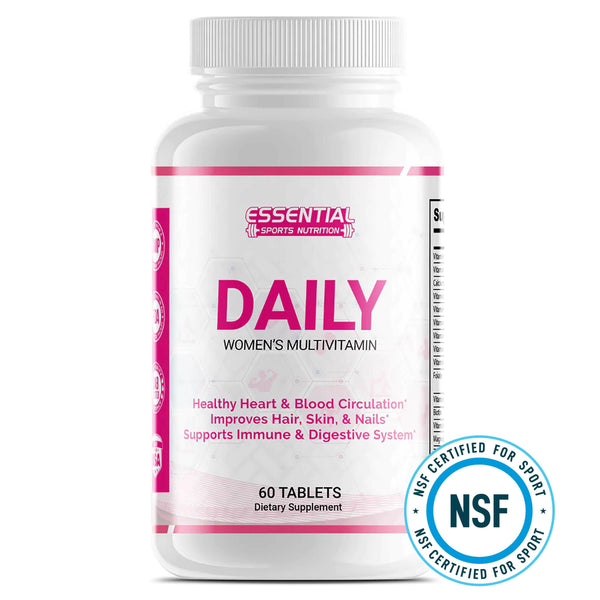Growth Hormone Overview: What It is and How It Affects Your Body
Understanding human growth hormone (HGH) isn't just a deep dive into endocrinology; it's a journey to understanding a cornerstone of your physical development and health. The hormone secreted by the anterior pituitary gland is a biochemical conductor, orchestrating a symphony of functions that compel your body to grow, repair, and adapt. As you delve into the nitty-gritty of this remarkable hormone, commonly referred to as GH, you'll see how it fuels not only the growth spurts of adolescence but also the continuous regeneration and balance that keeps adults thriving. Produced in the pituitary gland, GH is the unsung hero of hormones that shapes your vitality at every stage of life.

Key Takeaways
-
Understanding GH begins with its source: the anterior pituitary gland, which is meticulously secreted to maintain balance and growth.
-
The human growth hormone is integral for childhood development, but its influence persists, steering metabolic functions throughout adulthood.
-
Unveiling a growth hormone overview illuminates its pervasive role, from tissue regeneration to metabolic regulation.
-
Regulating your body's GH levels is crucial; too little or too much can lead to a gamut of health concerns.
-
A harmonious hormone orchestra enables optimal well-being, with the pituitary gland playing the role of maestro.
-
Dive into the specifics of GH to appreciate its profound effects, not just on how you grow, but how you sustain health and vitality.
Understanding Growth Hormone and Its Essential Role in the Body
Integral to human health, human growth hormone (HGH) is pivotal for maintaining a normal body structure and ensuring efficient metabolism. Produced by the pituitary gland, HGH's role extends beyond mere physical growth; it's essential for metabolic activities like glucose regulation and fat metabolism. Discover the multiplicity of growth hormone functions and the roles of growth hormone within the human body.
The significance of growth hormone extends to various tissues, impacting nearly every aspect of physical development, especially critical during childhood. But even after physical maturity, growth hormone levels continue to play a vital part in maintaining the body's structure and metabolic balance. Let's break down the various functions and roles of this versatile hormone.
-
Muscle mass: Encourages the growth of skeletal muscle.
-
Bone density: Contributes to the maintenance and strengthening of the bone structure.
-
Cell repair: Boosts regeneration and repair, fostering overall cellular health.
-
Metabolic processes: Regulates metabolism, influencing fat and carbohydrate processing.
-
Homeostasis: Maintains a stable internal environment in response to external changes.
These diverse responsibilities of HGH contribute to its critical nature, affecting how our bodies function daily. From children who rely on it for their developmental growth spurts to adults needing a stable metabolism and healthy spatial architecture, growth hormone remains indispensable.
Understanding the correct hormone levels is crucial for optimal health and identifying potential deficiencies or excesses in growth hormone, which could indicate broader health issues. A balance in HGH is essential, and it's typically achieved through a natural feedback loop within the endocrine system.
| Function | Related Tissue or System | Role of Growth Hormone |
|---|---|---|
| Protein Synthesis | Muscles | Promotes muscle mass and strength |
| Lipid Metabolism | Adipose Tissue | Facilitates the breakdown of fats |
| Carbohydrate Metabolism | Liver | Regulates blood glucose and insulin levels |
| Bone Growth | Skeletal System | Stimulates growth of cartilage and bone |
| Cell Repair and Regeneration | Various Tissues | Enhances healing and renewal processes |
The table above showcases a snapshot of the intricate roles growth hormone plays. Whether you're focused on optimizing health, managing a condition, or simply curious about the workings of your body, recognizing the roles and effects of growth hormone functions illuminates the symphony of biological processes within us.
How Growth Hormone is Produced and Regulated

The intricate dance of hormones within your body is a marvel of nature, especially when it comes to the delicate balance that governs the ebb and flow of growth hormone secretion. At the heart of this process is the anterior pituitary gland, which orchestrates the production of growth hormone (GH) or somatotropin. This gland doesn't work alone—it's influenced by complex feedback and regulatory mechanisms that ensure your body gets just the right amount of GH at the right times.
The Role of the Anterior Pituitary Gland
Consider the anterior pituitary gland as a manufacturing plant where growth hormone is produced. Nested within the gland, somatotropic cells are the workers responsible for synthesizing and releasing GH into the bloodstream. Various internal and external triggers prompt these cells into action, catering to the body's needs for growth and metabolic regulation.
Regulatory Mechanisms Involving GHRH and Somatostatin
Two essential hormones, growth hormone-releasing hormone (GHRH) and somatostatin, both produced by the hypothalamus, play pivotal roles in GH regulation. GHRH acts as a green light, signaling the release of GH, whereas somatostatin serves as a stop sign, inhibiting GH release. This tightly regulated system ensures that GH levels in the body are optimal for health and well-being.
Nutrition and Exercise: External Factors Affecting GH Levels
Your lifestyle choices have a significant impact on how your body regulates GH. Nutritional intake and physical activity are two potent influencers that can stimulate growth hormone release. Hunger can signal the release of ghrelin, another hormone that triggers GH secretion. At the same time, exercise is a forceful stimulator that can spike your GH levels, contributing to the body's adaptive response to stress and growth.
Here's a closer look at how various factors contribute to the regulation of GH:
| Factor | Effect on GH Secretion | Mechanism |
|---|---|---|
| GHRH | Stimulates | Signals the anterior pituitary to release GH |
| Somatostatin | Inhibits | Prevents excessive GH release |
| Nutrition | Varies | Poor nutrition can impede, while balanced nutrition can support, GH secretion |
| Exercise | Stimulates | Increases demand for GH to support tissue growth |
| Stress/Sleep | Stimulates | Activates adaptive responses, leading to increased GH release |
If you suspect issues with GH deficiency or overproduction, understanding these mechanisms and how they stimulate growth or inhibit it can guide you toward remedies that may balance growth hormone levels and help maintain the effect of growth hormone in its optimal state. In some cases, this knowledge can empower you to make lifestyle changes that encourage growth hormone stimulation and improve overall health.
Comprehensive Growth Hormone Overview: Functions and Effects
Understanding the effect of GH on your body is pivotal in appreciating its significant role in health and development. Growth hormone (GH), a catalyst for well-being, boasts widespread influences that span growth and metabolism. Discover the benefits of growth hormone and learn how the action of GH is integral to maintaining a robust and balanced life.
Growth hormone functions are dynamic, engaging various systems in the body. Its anabolic properties support growth and repair of tissues, particularly muscle and bone. Moreover, GH contributes to the efficient functioning of metabolic pathways, ensuring that your body’s energy needs are duly met.
-
Stimulates the growth of all body tissues
-
Enhances protein synthesis for muscle repair and growth
-
Increases fat breakdown, serving as an energy source
-
Regulates carbohydrate metabolism
-
Boosts production and action of insulin-like growth factor-1 (IGF-1)
While GH offers a cadre of advantages, it serves dual roles in its method of action:
GH acts directly by binding to receptors on target cells and indirectly by stimulating the liver and other tissues to produce IGF-1, which in turn prompts a plethora of growth-promoting effects.
| Action of GH | Resulting Function | Health Benefit |
|---|---|---|
| Anabolic action on muscle | Protein synthesis and muscle growth | Increased muscle mass and strength |
| Lipolytic effect | Mobilization of fat stores | Reduction in body fat percentage |
| Carbohydrate modulation | Maintenance of blood glucose levels | Improved energy availability |
| Stimulation of IGF-1 | Cellular growth and regeneration | Supports overall bodily growth and recovery |
Whether contemplating GH's natural occurrence in our bodies or evaluating its synthetic analogs for medical use, recognizing the effect of GH bridges the gap between complex biological processes and their tangible impacts on daily life.
Growth Promotion: How GH Influences Development

Understanding the powerful role of growth hormone (GH) in the human body is essential, especially when it comes to skeletal growth and bone growth. This remarkable hormone is not just a crucial factor in growth in children, but its influence extends to adulthood, playing a pivotal role in growth regulation and maintenance of growth hormone levels for overall wellness. Let's dive into how GH acts as a key promoter of development and what changes occur from childhood to adulthood.
GH and Its Impact on Skeletal Growth
During the formative years, your growth plates—or epiphyseal plates—are the engine rooms of your skeletal development. GH acts directly on these plates to stimulate growth, guiding the longitudinal expansion of bones. It encourages the replication of chondrocytes, the architects of new cartilage, which is eventually replaced by bone through a process known as endochondral ossification—for the scientifically curious among you. The impact is most evident during the peak of puberty when GH levels soar and spur notable height increases.
Role in Childhood vs. Adulthood Growth Patterns
The presence of GH in the body signifies more than just the potential for height; it’s a guardian of your bone health both in childhood and adulthood. For growth in children, GH is the maestro, conducting the orchestra of hormones that lead to significant physical development. Yet, after the symphony of puberty concludes and the growth plates close, GH's role transforms. For growth hormone in adults, it’s less about building the skyscraper and more about maintaining it—keeping the structure sound and the metabolism efficient.
In summation, whether it's fueling the rapid growth spurts of adolescence or ensuring the robustness of an adult's skeletal framework, GH is an essential protagonist in the narrative of human growth and development.
Metabolic Effects of Growth Hormone on Your Health
The profound influence of growth hormone on your body extends beyond mere tissue growth. It plays a pivotal role in various metabolic processes that are essential for your overall well-being. Let's delve into the anabolic effects of growth hormone and its significant impact on metabolism.
GH and Its Anabolic Role in Protein Synthesis
Growth hormone acts as a powerful stimulator of protein synthesis, enhancing the anabolic effects necessary for tissue growth and muscle growth. It increases amino acid uptake, reduces protein breakdown, and promotes efficient repair and regeneration of your muscles.
Influence on Fat Metabolism and Blood Glucose Levels
Beyond its role in building strength, growth hormone also aids in fat metabolism, encouraging the breakdown of triglycerides which is beneficial for those aiming to maintain a healthy body composition. Moreover, it can influence blood glucose levels and bring about a hyperglycemic state by countering the actions of insulin on muscle and fat tissues, while enhancing glucose production in the liver.
| Metabolic Function | Impact of Growth Hormone |
|---|---|
| Protein Synthesis |
|
| Fat Metabolism | Encourages triglyceride breakdown and oxidation in fat cells |
| Carbohydrate Metabolism |
|
| Production of IGF-1 | Stimulates the production of insulin-like growth factor-1 in the liver, fostering cell proliferation and survival |
Understanding these metabolic pathways provides a clearer picture of how the anabolic effects of growth hormone can be harnessed for maintaining vitality and health, particularly in the context of muscle growth and metabolism. It also underscores the importance of managing blood glucose levels to mitigate the risk of a hyperglycemic state.
What Triggers the Release of Growth Hormone?

The intricate dance of hormone secretion within your body is finely tuned and incredibly complex. Certain physiological stimuli are key to encouraging growth hormone release and maintaining optimal GH levels. One such stimulus is hypoglycemia, which signals an urgent need for growth hormone stimulation to maintain blood sugar balance. Similarly, sleep—a time when the body focuses on repair and regeneration—naturally prompts the secretion of growth hormone.
Stress and exercise are also powerful triggers that engage the body's survival and recovery responses, leading to a surge in hormone secretion. Interestingly, amino acids from your diet play a pivotal role too, particularly those consumed in protein-rich foods, which can stimulate further growth hormone release. To ensure the appropriate modulation of this process, your hypothalamus produces GHRH to energize release, and somatostatin to ease it back, maintaining a delicate equilibrium.
GH levels rise and fall in response to these stimuli, ensuring that your body's needs are met with precision. Whether preserving blood sugar levels, facilitating growth, or managing stress, this hormonal ebb and flow is essential for your overall well-being.
The Interplay of GH with Other Hormones in the Endocrine System

Exploring the vast network of the endocrine system unveils the intricate relationships between growth hormone (GH) and other pivotal hormones. Your body's hormone production is a delicate dance of signals and responses, ensuring everything works in perfect harmony.
Insulin-Like Growth Factor 1 (IGF-1) and Negative Feedback
At the core of this system is insulin-like growth factor 1 (IGF-1), known for its essential role in regulating body growth and development. A stellar example of the endocrine system's checks and balances is IGF-1's negative feedback to GH. When IGF-1 levels rise, they signal the need to dial down GH production, maintaining an equilibrium vital for your health. It's a prime instance of how your body uses negative feedback to stay balanced.
Thyroxine, Glucocorticoids, and Ghrelin's Role
Other hormones like thyroid hormone and glucocorticoids also contribute to this hormonal symphony by acting as stimulants for GH release. The thyroid hormone is particularly noteworthy, as it works in concert with GH to ensure a steady pace of growth and metabolism.
Additionally, ghrelin, a hormone secreted by the stomach lining, is gaining recognition for its ability to stimulate growth hormone release. Beyond controlling appetite, ghrelin joins forces with GH to harmonize various body functions, revealing yet another layer of complexity in endocrine regulation. Let's visualize the interaction of these hormones in a comprehensive table:
| Hormone | Source | Role in GH Regulation | Effect on the Body |
|---|---|---|---|
| IGF-1 | Liver | Negative feedback to GH | Regulates growth and development |
| Thyroid Hormone | Thyroid Gland | Stimulates GH release | Supports metabolic processes |
| Glucocorticoids | Adrenal Gland | Modulates GH response | Manages stress and metabolism |
| Ghrelin | Stomach | Stimulates GH release | Regulates appetite and growth |
As you delve into the ways your body's hormones interact, it becomes clear that such interactions are fundamental to your overall well-being. Whether it's IGF-1 ensuring the balance of GH or thyroid hormones and ghrelin fine-tuning its release, these hormones collectively synchronize to keep you healthy and thriving.
Diagnosing and Testing for Growth Hormone Levels

Assessing growth hormone levels in the blood requires careful consideration due to the hormone's pulsatile nature. Traditional tests may not effectively diagnose GH deficiency owing to the hormone's fluctuating concentrations. To address this, healthcare providers often rely on evaluating secondary markers like insulin-like growth factor I (IGF-I) and binding protein-3 levels.
A stimulation test for growth hormone is a more dynamic approach to evaluate pituitary function. During this test, a patient is given a pharmacological agent such as L-dopa or glucagon that triggers the release of growth hormone. Blood samples are then taken at regular intervals, typically every 30 minutes to an hour, to measure HGH levels and their response to the stimulant.
The table below outlines the procedure and the interpretation of results from a stimulation test.
| Time | Procedure | Normal Response | GH Deficiency Indication |
|---|---|---|---|
| 0 minutes | Baseline blood sample | HGH detectable | HGH low or undetectable |
| 30 minutes | Administer stimulant (e.g., L-dopa) | HGH levels begin to rise | No change in HGH levels |
| Each subsequent hour | Additional blood samples | HGH levels peak, then gradually decrease | HGH levels remain unchanged or far below expected peak |
Remember, any abnormalities in growth hormone levels in blood should be analyzed by a healthcare professional with expertise in endocrinology. Whether you're concerned about potential GH deficiency or you're monitoring HGH levels for other health-related reasons, these tests can provide critical insights into your endocrine function.
Effects of Growth Hormone Deficiency and Excess

Understanding how variations in growth hormone (GH) levels can drastically affect our health is critical. Whether dealing with a deficiency or an excess, it's essential to recognize the signs and prepare for the associated risks.
Identifying Growth Hormone Deficiency in Children and Adults
If you or your child are experiencing poor growth or growth failure, it may be a sign of growth hormone deficiency (GH deficiency). In children, this can lead to a noticeable lack of height and delayed development. For adults, the symptoms become more subtle but no less serious, with a possibility of decreased muscle mass and increased fat accumulation. Deficiency in children and adults not only impacts physical stature but can also lead to metabolic disruptions that affect the quality of life.
Recognizing Signs and Symptoms of Excess GH
Conversely, the body's overproduction of growth hormone can lead to conditions like acromegaly in adults, where excessive growth of bones in the hands, feet, and face occurs. In children, too much GH can lead to gigantism, characterized by abnormal increases in height and size due to early-onset overproduction. Symptoms of excess growth hormone can also include systemic problems, such as hypertension and Type 2 diabetes, stemming from excessive growth.
Being vigilant about both extremes of GH levels is crucial. Should you suspect either a deficiency or an overabundance of GH, consulting a healthcare professional can guide you on the path to proper diagnosis and intervention. Knowledge is your best tool in managing and addressing hormone-related growth issues.
Growth Hormone Therapy: Uses and Considerations

When exploring the realm of growth hormone therapy, understanding the various scenarios where this treatment is applicable is imperative. Treating conditions like growth hormone deficiency has been revolutionized by the advent of recombinant human growth hormone (rHGH), a synthetic form that replicates the naturally occurring hormone. The careful administration of growth hormone treatment can lead to significant improvements in growth patterns and overall health.
The eligibility for human growth hormone therapy should always be determined by a healthcare professional. Individuals seeking to augment athletic performance or appearance, but lacking a medicinal need, should particularly heed medical advice. The improper use of growth hormone replacement compounds the risk of adverse side effects, and thus, it's reserved strictly for those with diagnosed deficiencies or other specific health concerns.
Growth hormone therapy is a valuable tool in managing GH deficiency, but like any treatment, requires close supervision and a tailored approach to ensure safety and efficacy.
To provide a clearer understanding of the considerations and uses, let's look at a comparative table illustrating the standard protocols for initiating hormone therapy alongside the potential risks if misused.
| Therapeutic Use | Risks of Inappropriate Use |
|---|---|
| Growth hormone replacement in children and adults with confirmed deficiency | Joint and muscle pain, insulin resistance, increased risk of diabetes |
| Wasting syndrome treatment in HIV/AIDS patients | Exacerbated symptoms of existing tumors or malignant growth |
| Short bowel syndrome where nutrient absorption is impaired | Swelling due to fluid retention (edema), carpal tunnel syndrome |
| Turner syndrome, Prader-Willi syndrome, and other genetic disorders affecting growth | Enlargement of breasts in males (gynecomastia), potential for abusive use |
Before embarking on growth hormone therapy, it's crucial to weigh the benefits against potential risks. Properly managed, rHGH can be a beacon of hope for those grappling with hormonal health challenges. Always seek guidance from certified endocrinologists or pediatricians specialized in hormone disorders to make an informed decision.
Conclusion

As you explore the complex world of human development and metabolic regulation, the critical roles of growth hormone become unmistakably clear. This versatile hormone, while central to the human growth hormone effects we observe during different life stages, extends its influence far beyond merely increasing stature. Through this growth hormone overview, you've seen how GH acts as a foundational element that supports not only physical growth but also intricately participates in maintaining metabolic processes and overall physiological harmony.
Summing Up the Critical Roles of Growth Hormone
From stimulating tissue growth to ensuring a well-balanced metabolism, GH's physiological contributions are vast. Its direct and indirect actions orchestrate activities ranging from cellular growth to the metabolism of fats and sugars. These multifunctional attributes underscore the growth hormone benefits that are essential during the dynamic years of youth and still significantly impact your health well into adulthood.
Reflecting on the Importance of Balanced GH Levels
However, the equilibrium of GH levels is paramount. Just as a symphony relies on the perfect balance of various instruments, your body depends on balanced GH levels for optimal performance and well-being. Disruptions in this balance, leading to either deficiency or excess, can have profound effects—from the delicate nuances of metabolic function to the more apparent aspects of physical development. Recognizing the potential side effects of growth hormone imbalances is critical as it emphasizes the necessity for precise diagnostic acumen and therapeutic interventions. By maintaining harmony in GH levels, we pave the way for health and vitality that echoes throughout the span of life.
Growth Hormone FAQs
Q: What is growth hormone?
A: Growth hormone is a peptide hormone that is produced by the pituitary gland. It is responsible for the growth and development of various tissues in the body.
Q: How does growth hormone work?
A: Growth hormone works by binding to the growth hormone receptor, which is present in nearly every tissue in the body. This binding promotes the production of insulin-like growth factor-I (IGF-I), which is responsible for many of the growth-promoting effects of growth hormone.
Q: What are the effects of human growth hormone?
A: Human growth hormone has a wide range of effects on the body. It helps to promote growth in size, maintain normal body structure, and regulate the growth of various tissues.
Q: What is the role of growth hormone-releasing hormone?
A: Growth hormone-releasing hormone (GHRH) is a hormone that stimulates the release of growth hormone from the pituitary gland. It helps to regulate the levels of growth hormone in the body.
Q: How is adult growth hormone deficiency treated?
A: Adult growth hormone deficiency can be treated with recombinant growth hormone therapy. This involves regular hormone injections to restore normal growth hormone levels.
Q: Can growth hormone be used to treat growth retardation in children?
A: Yes, growth hormone can be used to treat growth retardation in children. It can help to stimulate growth and allow for normal development.
Q: What is insulin-like growth factor-I (IGF-I)?
A: Insulin-like growth factor-I (IGF-I) is a hormone that is produced in response to growth hormone stimulation. It plays a crucial role in mediating the effects of growth hormone on growth and development.
Q: What is the growth hormone gene family?
A: The growth hormone gene family consists of a group of genes that encode various forms of growth hormone. These genes are responsible for the production of growth hormone in the body.
Q: Can adults with growth hormone deficiency benefit from growth hormone therapy?
A: Yes, adults with growth hormone deficiency can benefit from growth hormone therapy. It can help to alleviate symptoms associated with growth hormone deficiency and improve overall well-being.
Q: What are the potential risks or side effects of growth hormone therapy?
A: Some potential risks or side effects of growth hormone therapy include joint and muscle pain, swelling in the arms and legs, and increased risk of diabetes or heart disease. It is important to discuss these potential risks with a healthcare provider before starting growth hormone therapy.



